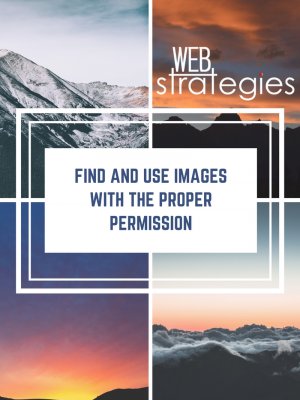We know how important strong imagery is with any online marketing today from our blogs to social media. What seems to create confusion is how to find and use images with the proper permission. Two major setbacks most DIY bloggers encounter are; 1. Lack of quality images (let’s face it, a shaky hand and poor camera quality isn’t going to create the best outcomes) 2. We may not always have access to the perfect image in our personal library. That’s when the lovely world of stock images and endless web-based galleries comes in handy. You can find the right image or graphic for just about anything you can think of, save it and quickly be on your way to perfecting your marketing piece. The important piece to remember, and often gets overlooked, is the licensing behind each image. Do you have the right to save that image or graphic and use it for your own purposes? Who likes to get sued? We certainly don’t but have, unfortunately, witnessed multiple levels ranging from warnings to money due from using images you didn’t have permission for.
What to do to ensure the images you use in your online marketing are safe?

Never Just Copy and Paste
Long gone are the days of quickly doing a Google search for an image, saving or copying it and adding it to your blog or marketing post. Every single image you find on the internet is owned by someone. If you didn’t put it out there, then it’s not yours. Just because an image doesn’t have a watermark or clear copyright mark doesn’t mean it’s up for grabs. Using an image you simply found can lead you down a nasty copyright infringement path you never expected.
Use Your Own
If your marketing purposes require a focus on your own day to day interactions, it may be time to invest in proper equipment. Purchase a phone with a quality camera, research digital cameras that would accommodate your photo or video needs, explore apps and software for editing your images and videos as needed. If using your own material is what makes the most marketing sense, don’t skimp. Understand what your needs are and go all in. Everyone is an “amateur photographer” nowadays so any “lack” in quality is quickly noticed and judged. If you don’t feel up to the challenge, hire a professional.
Get Permission
Most people are happy to give you permission to use their image, provided you ask permission. If you are unsure if you should use the image, graphic or video, you should ask. Find the source and ask for permission to use their imagery. If you are unsuccessful in obtaining permission, move on. With copyright infringement, you can’t follow the “use it now and ask for forgiveness later” mentality. If traced back to you, you will immediately be hit with illegal use and the battle will only begin from there! Written consent is always best to have backing proof that you were granted authorization to use the photo.
Give Credit Where Credit Is Due
Provide clear attributed linking where you found your image. Most artists are willing to share their images as long as credit is given to them (and rightfully so). This is a less costly way of obtaining imagery for your marketing needs, however, it must be approached with caution. Have a clear understanding that the images you found online do fall in that category and it’s clearly stated that the public has permission to use the image as they please as long as it’s shared where the image originated from.
Use Stock Photos
If you have a constant need for images and graphics for your marketing, it might be in your best interest to sign up for infinite access to images you can purchase the rights to use. Sites like iStock and Depositphotos house images of any category in an organized and legal manner so there’s no question on whether or not you can use it. One thing to watch for is the type of license required for your use and what the image author offers. Many licenses can limit you to personal use only, online media only (versus print), or a certain number of uses. Check and double check before you make your purchase. Just because you “purchased” something doesn’t give you full, entitled access to the use it, however, you, please. Read more about royalty free images here
Be Wary of “Fair Use”
“In its most general sense, a fair use is any copying of copyrighted material done for a limited and “transformative” purpose, such as to comment upon, criticize, or parody a copyrighted work. Such uses can be done without permission from the copyright owner. In other words, fair use is a defense against a claim of copyright infringement. If your use qualifies as a fair use, then it would not be considered an infringement.
So what is a “transformative” use? If this definition seems ambiguous or vague, be aware that millions of dollars in legal fees have been spent attempting to define what qualifies as a fair use. There are no hard-and-fast rules, only general guidelines, and varied court decisions because the judges and lawmakers who created the fair use exception did not want to limit its definition. Like free speech, they wanted it to have an expansive meaning that could be open to interpretation. Most fair use analysis falls into two categories: (1) commentary and criticism, or (2) parody.”

